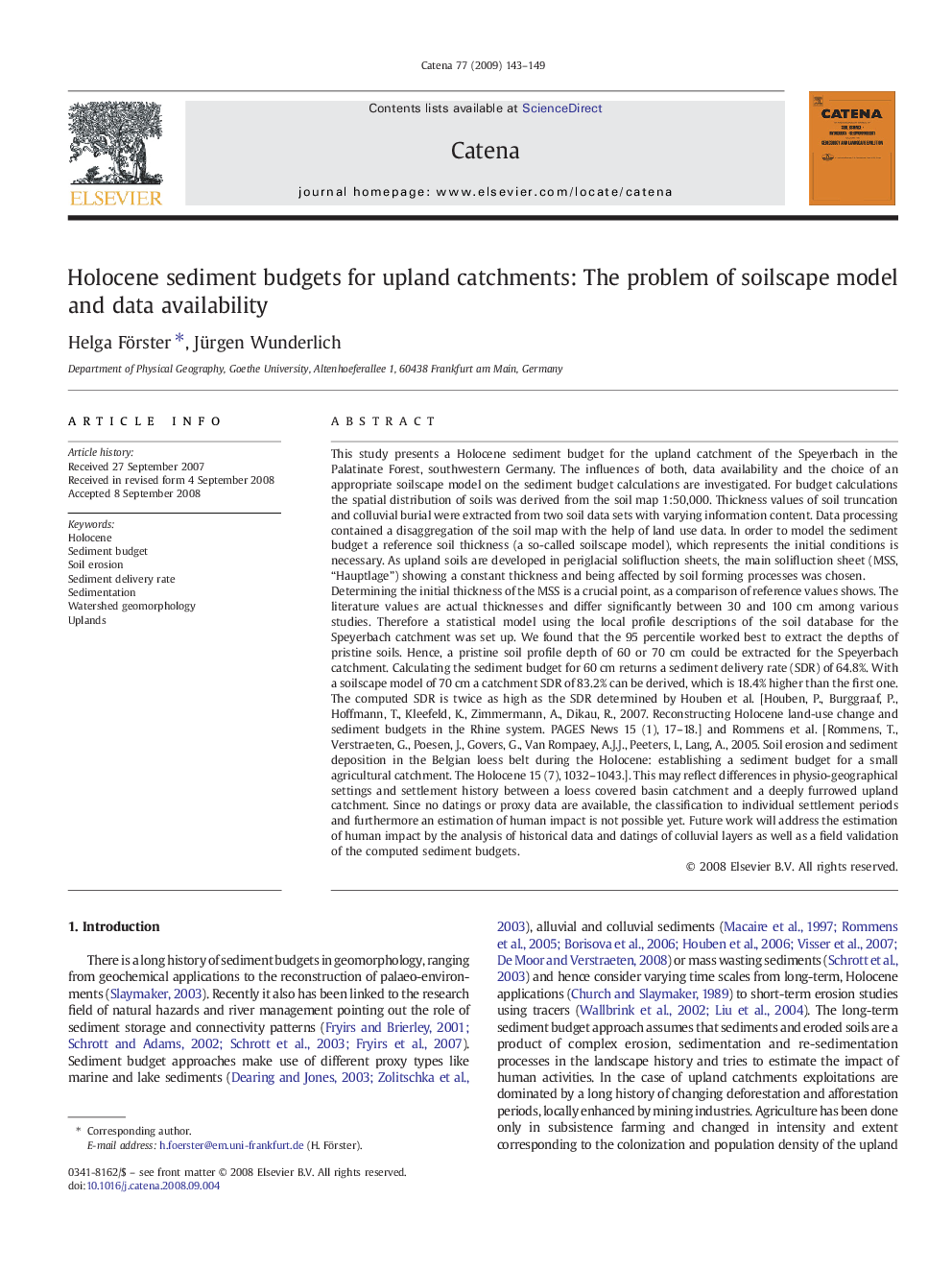| کد مقاله | کد نشریه | سال انتشار | مقاله انگلیسی | نسخه تمام متن |
|---|---|---|---|---|
| 4572310 | 1332167 | 2009 | 7 صفحه PDF | دانلود رایگان |

This study presents a Holocene sediment budget for the upland catchment of the Speyerbach in the Palatinate Forest, southwestern Germany. The influences of both, data availability and the choice of an appropriate soilscape model on the sediment budget calculations are investigated. For budget calculations the spatial distribution of soils was derived from the soil map 1:50,000. Thickness values of soil truncation and colluvial burial were extracted from two soil data sets with varying information content. Data processing contained a disaggregation of the soil map with the help of land use data. In order to model the sediment budget a reference soil thickness (a so-called soilscape model), which represents the initial conditions is necessary. As upland soils are developed in periglacial solifluction sheets, the main solifluction sheet (MSS, “Hauptlage”) showing a constant thickness and being affected by soil forming processes was chosen.Determining the initial thickness of the MSS is a crucial point, as a comparison of reference values shows. The literature values are actual thicknesses and differ significantly between 30 and 100 cm among various studies. Therefore a statistical model using the local profile descriptions of the soil database for the Speyerbach catchment was set up. We found that the 95 percentile worked best to extract the depths of pristine soils. Hence, a pristine soil profile depth of 60 or 70 cm could be extracted for the Speyerbach catchment. Calculating the sediment budget for 60 cm returns a sediment delivery rate (SDR) of 64.8%. With a soilscape model of 70 cm a catchment SDR of 83.2% can be derived, which is 18.4% higher than the first one. The computed SDR is twice as high as the SDR determined by Houben et al. [Houben, P., Burggraaf, P., Hoffmann, T., Kleefeld, K., Zimmermann, A., Dikau, R., 2007. Reconstructing Holocene land-use change and sediment budgets in the Rhine system. PAGES News 15 (1), 17–18.] and Rommens et al. [Rommens, T., Verstraeten, G., Poesen, J., Govers, G., Van Rompaey, A.J.J., Peeters, I., Lang, A., 2005. Soil erosion and sediment deposition in the Belgian loess belt during the Holocene: establishing a sediment budget for a small agricultural catchment. The Holocene 15 (7), 1032–1043.]. This may reflect differences in physio-geographical settings and settlement history between a loess covered basin catchment and a deeply furrowed upland catchment. Since no datings or proxy data are available, the classification to individual settlement periods and furthermore an estimation of human impact is not possible yet. Future work will address the estimation of human impact by the analysis of historical data and datings of colluvial layers as well as a field validation of the computed sediment budgets.
Journal: CATENA - Volume 77, Issue 2, 15 May 2009, Pages 143–149